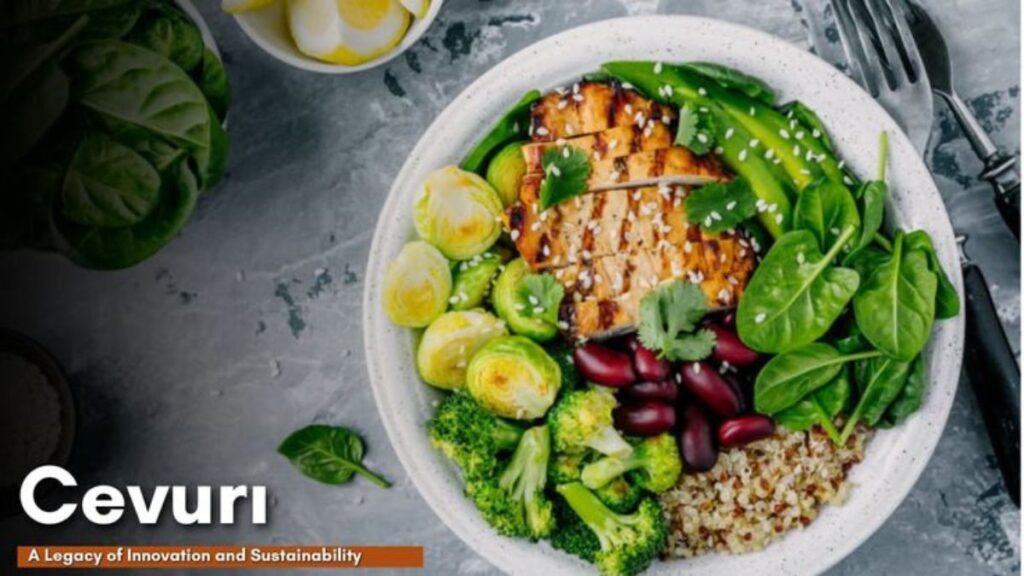When one thinks of Turkish cuisine, dishes like kebabs, baklava, and meze platters often come to mind. However, beyond these internationally recognized staples lies a treasure trove of regional specialties that reflect the diverse geography, history, and cultural mosaic of Turkey. Among these lesser-known yet deeply cherished dishes is cevurı—a traditional preparation that embodies the rustic charm and culinary ingenuity of Anatolian home cooking.
Though not widely known outside Turkey, cevurı holds a special place in the hearts of those who grew up with it simmering on stovetops in village kitchens or served during festive gatherings. This article delves into the origins, ingredients, preparation methods, regional variations, and cultural significance of cevurı, offering a comprehensive look at why this dish deserves a spotlight in the global appreciation of Turkish food.
What Is Cevurı?
At its core, cevurı is a hearty, slow-cooked dish that typically features meat—most commonly lamb or beef—combined with legumes, grains, and aromatic spices. While the exact composition varies by region, the essence of cevurı lies in its simplicity, depth of flavor, and the time-honored techniques used to prepare it. Unlike flashier dishes designed for restaurant menus, cevurı is fundamentally a home-style meal, often prepared in large quantities to feed extended families or entire communities during special occasions.
The name “cevurı” itself is believed to derive from local dialects in southeastern or eastern Anatolia, where the dish is most prevalent. Though the etymology is not definitively documented, some linguists suggest it may relate to words meaning “to turn” or “to stir,” referencing the constant attention the dish requires during its long cooking process. Others propose it stems from older Turkic roots tied to communal feasting or seasonal rituals.
Regardless of its linguistic origin, cevurı is more than just food—it is a vessel of memory, tradition, and identity for many Turkish families.
Historical and Cultural Roots
To understand cevurı, one must first appreciate the historical context of Anatolia—a crossroads of civilizations where culinary traditions have intermingled for millennia. The dish likely evolved from the nomadic and agrarian lifestyles of early Turkic tribes who settled in the region. These communities relied on preserved and slow-cooked meals that could sustain large groups through harsh winters or long journeys.
Over time, as Turkish culture absorbed influences from Persian, Arab, Armenian, and Kurdish neighbors, cevurı adapted, incorporating new ingredients and techniques while retaining its foundational character. In rural villages, especially in provinces like Van, Bitlis, and Hakkari, cevurı became a symbol of hospitality and generosity. It was—and still is—common to prepare cevurı for weddings, religious holidays, or community gatherings, where sharing food reinforces social bonds.
Interestingly, cevurı also reflects the resourcefulness of Anatolian cooks. In times of scarcity, every part of the animal was used, and legumes or grains stretched the meat to feed more people. This frugality did not compromise flavor; instead, it led to deeply layered, complex dishes that showcased the cook’s skill and patience.
Key Ingredients and Flavor Profile
While recipes for cevurı differ from household to household, certain ingredients form the backbone of the dish:
- Meat: Traditionally, lamb shoulder or beef shank is used for its rich marbling and ability to become tender during slow cooking. Some versions use offal, such as liver or tripe, reflecting the nose-to-tail ethos of traditional Anatolian cooking.
- Legumes: Chickpeas, lentils, or white beans are common additions, providing protein, texture, and heartiness.
- Grains: Bulgur or cracked wheat is sometimes included, especially in versions meant to serve as a complete one-pot meal.
- Onions and Garlic: These aromatics form the flavor base, sautéed until golden before other ingredients are added.
- Tomato Paste and Peppers: Both sweet and hot red pepper pastes (biber salçası) are essential for depth and color, a hallmark of southeastern Turkish cuisine.
- Spices: Cumin, paprika, black pepper, and sometimes cinnamon or allspice lend warmth and complexity.
- Yogurt or Butter: In some regions, a dollop of strained yogurt or clarified butter (sade yağ) is stirred in at the end for richness.
The resulting flavor profile of cevurı is robust, savory, and slightly smoky, with a satisfying balance between meaty depth and the earthiness of legumes and grains. It is neither overly spicy nor excessively rich—instead, it offers comforting, homey flavors that linger on the palate.
Traditional Preparation Method
Preparing cevurı is an act of patience and care. The process typically begins the night before, with dried legumes soaked overnight to ensure even cooking. On the day of preparation, the meat is cut into large chunks and seared in a heavy-bottomed pot (traditionally a copper or cast-iron kazan) to develop a caramelized crust.
Next, finely chopped onions are sautéed in the rendered fat until soft and translucent. Tomato and pepper pastes are then added and cooked briefly to remove their raw edge—a crucial step that deepens the dish’s color and flavor. The seared meat returns to the pot, along with soaked legumes, grains (if used), and enough water or broth to cover everything.
The mixture is brought to a gentle simmer and then cooked slowly over low heat for several hours—often 3 to 5 hours—until the meat is fork-tender and the legumes have broken down slightly, thickening the broth into a rich, stew-like consistency. Skimming impurities and occasional stirring prevent burning and ensure even cooking.
In many households, the final touch involves tempering butter or oil with dried mint or red pepper flakes and drizzling it over the finished cevurı just before serving. This aromatic garnish adds a bright, fragrant layer that elevates the entire dish.
Regional Variations Across Turkey
One of the most fascinating aspects of cevurı is its regional diversity. While the core concept remains consistent, local ingredients and customs shape distinct versions:
Eastern Anatolia (Van, Bitlis, Muş)
In this mountainous region, cevurı often includes lamb and chickpeas, with a generous amount of isot pepper (a smoky, deep-red chili unique to the area). It is commonly served with flatbread and fresh herbs like parsley and mint. Some families add a splash of pomegranate molasses for a subtle tang.
Southeastern Anatolia (Diyarbakır, Mardin, Şanlıurfa)
Here, cevurı may incorporate bulgur or rice, transforming it into a more porridge-like consistency. Beef is preferred over lamb, and the dish is frequently enriched with tail fat (kuyruk yağı) for extra richness. It is often paired with ayran (a salty yogurt drink) to balance the heaviness.
Central Anatolia (Kayseri, Sivas)
In these provinces, cevurı sometimes features lentils instead of chickpeas and is seasoned more mildly, allowing the natural flavors of the meat and grains to shine. It may be baked in a clay pot (güveç) in a wood-fired oven, imparting a unique earthy aroma.
Black Sea Region
Though less common here, some coastal communities have adapted cevurı using local herbs like tarragon or adding cornmeal for thickness, reflecting the region’s distinct agricultural profile.
These variations underscore how cevurı is not a rigid recipe but a living tradition that evolves with its environment.
Cevurı in Modern Turkish Cuisine
In recent years, there has been a resurgence of interest in traditional Turkish dishes, driven by both culinary nostalgia and a global trend toward heritage cooking. Chefs in Istanbul and Ankara have begun reinterpreting cevurı for contemporary palates—serving it in refined portions, pairing it with artisanal breads, or using organic, pasture-raised meats.
Food festivals and cultural events now frequently feature cevurı as a symbol of Anatolian authenticity. Social media has also played a role: home cooks share their family recipes online, sparking conversations about regional differences and sparking curiosity among younger generations who may have never tasted the dish.
Despite these modern adaptations, purists insist that cevurı’s soul lies in its humble origins. As one elder from Van once said, “Cevurı isn’t about perfection—it’s about love, time, and sharing.”
Nutritional Value and Health Benefits
Beyond its cultural significance, cevurı offers notable nutritional benefits. The combination of lean meat, legumes, and whole grains provides a balanced source of protein, fiber, complex carbohydrates, and essential vitamins and minerals.
- Legumes like chickpeas and lentils are rich in fiber, which supports digestive health and helps regulate blood sugar.
- Lean red meat supplies iron, zinc, and B vitamins, crucial for energy metabolism and immune function.
- Tomato and pepper pastes are high in lycopene and capsaicin—antioxidants linked to reduced inflammation and heart health.
- The slow-cooking method preserves nutrients better than high-heat techniques and enhances digestibility.
When prepared without excessive fat or salt, cevurı can be a wholesome, satisfying meal suitable for a variety of dietary needs.
How to Make Cevurı at Home
For those eager to try cevurı outside of Turkey, the dish is surprisingly accessible with basic ingredients. Here’s a simplified recipe inspired by the eastern Anatolian style:
Ingredients:
- 500g lamb shoulder, cubed
- 1 cup dried chickpeas, soaked overnight
- 2 large onions, finely chopped
- 2 tbsp tomato paste
- 2 tbsp isot pepper paste (or substitute with sweet and hot paprika)
- 1 tsp ground cumin
- Salt and black pepper to taste
- 4 cups water or lamb broth
- 2 tbsp butter (optional, for finishing)
- Fresh parsley or mint for garnish
Instructions:
- Drain and rinse the soaked chickpeas.
- In a large pot, sear the lamb pieces over medium-high heat until browned. Remove and set aside.
- In the same pot, sauté onions in the rendered fat until golden.
- Add tomato and pepper pastes; cook for 2–3 minutes, stirring constantly.
- Return the lamb to the pot. Add chickpeas, cumin, salt, pepper, and water/broth.
- Bring to a boil, then reduce heat to low. Cover and simmer for 3–4 hours, stirring occasionally, until meat is tender and chickpeas are soft.
- Skim off excess fat if desired. Stir in butter just before serving.
- Garnish with fresh herbs and serve with crusty bread or rice.
This version captures the essence of cevurı while remaining approachable for home cooks.
Preserving a Culinary Legacy
As globalization homogenizes food cultures, dishes like cevurı risk fading into obscurity. Yet, their preservation is vital—not just for taste, but for cultural memory. Cevurı represents centuries of adaptation, resilience, and community. Each pot tells a story of survival, celebration, and shared humanity.
Efforts to document and promote regional Turkish cuisine—through cookbooks, documentaries, and culinary tourism—are helping to keep cevurı alive. Organizations like the Slow Food movement have even included Anatolian dishes in their Ark of Taste, recognizing their cultural and ecological value.
For Turkish families, passing down the recipe for cevurı is an act of intergenerational connection. Grandmothers teach grandchildren not just how to cook, but how to listen—to the sizzle of onions, the rhythm of the simmer, the silence that falls over a table when cevurı is served.
Conclusion
Cevurı may not grace the menus of Michelin-starred restaurants or trend on food blogs, but its quiet dignity and profound flavor make it a cornerstone of authentic Turkish cuisine. More than a recipe, it is a testament to the ingenuity of Anatolian cooks who transformed simple ingredients into nourishing, soulful meals.
In a world increasingly obsessed with speed and convenience, cevurı reminds us of the value of slowness—of time spent stirring a pot, sharing a meal, and honoring tradition. Whether enjoyed in a mountain village in eastern Turkey or recreated in a kitchen halfway across the globe, cevurı offers a taste of heritage, warmth, and belonging.
As interest in global food traditions grows, dishes like cevurı deserve recognition not just for their taste, but for the stories they carry. So the next time you explore Turkish cuisine, look beyond the familiar kebabs and seek out the humble, hearty embrace of cevurı—a dish that, though unassuming, holds the heart of Anatolia in every spoonful.
And remember: whether spelled with a dot or without, whether made with lamb or beef, with chickpeas or lentils, the spirit of cevurı remains the same—a celebration of community, continuity, and the timeless art of cooking with care.







